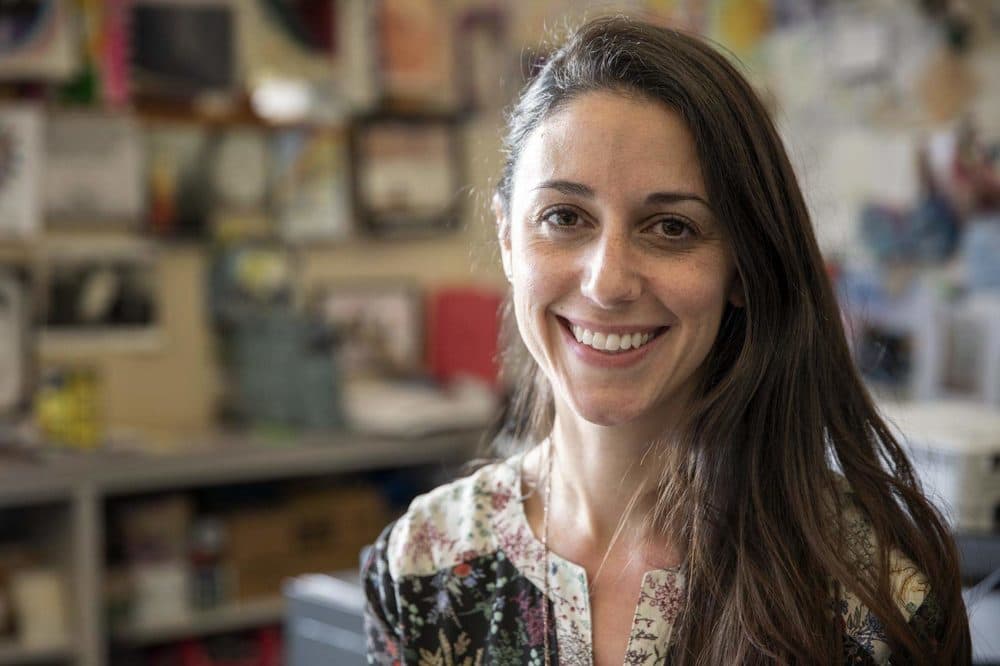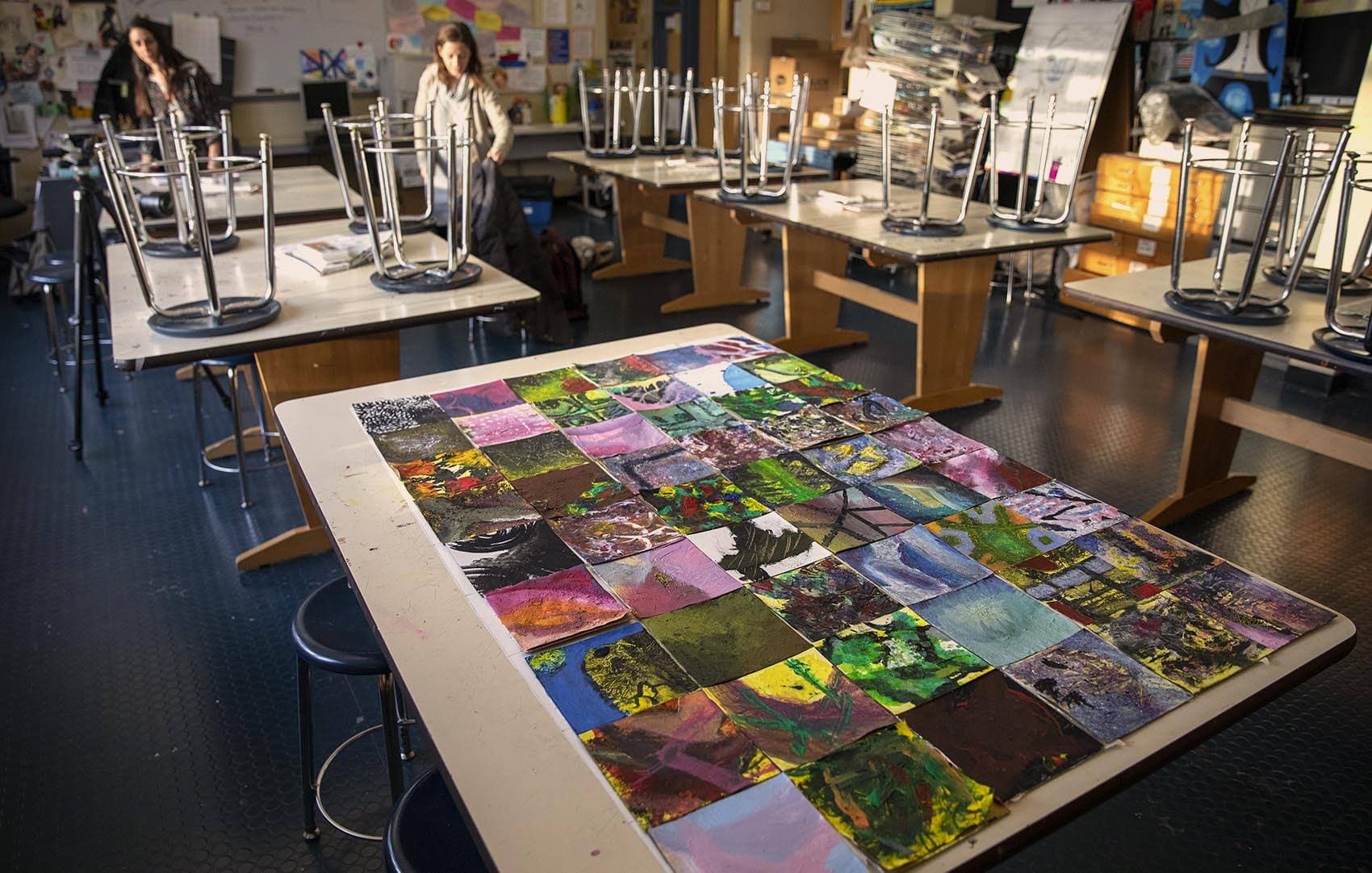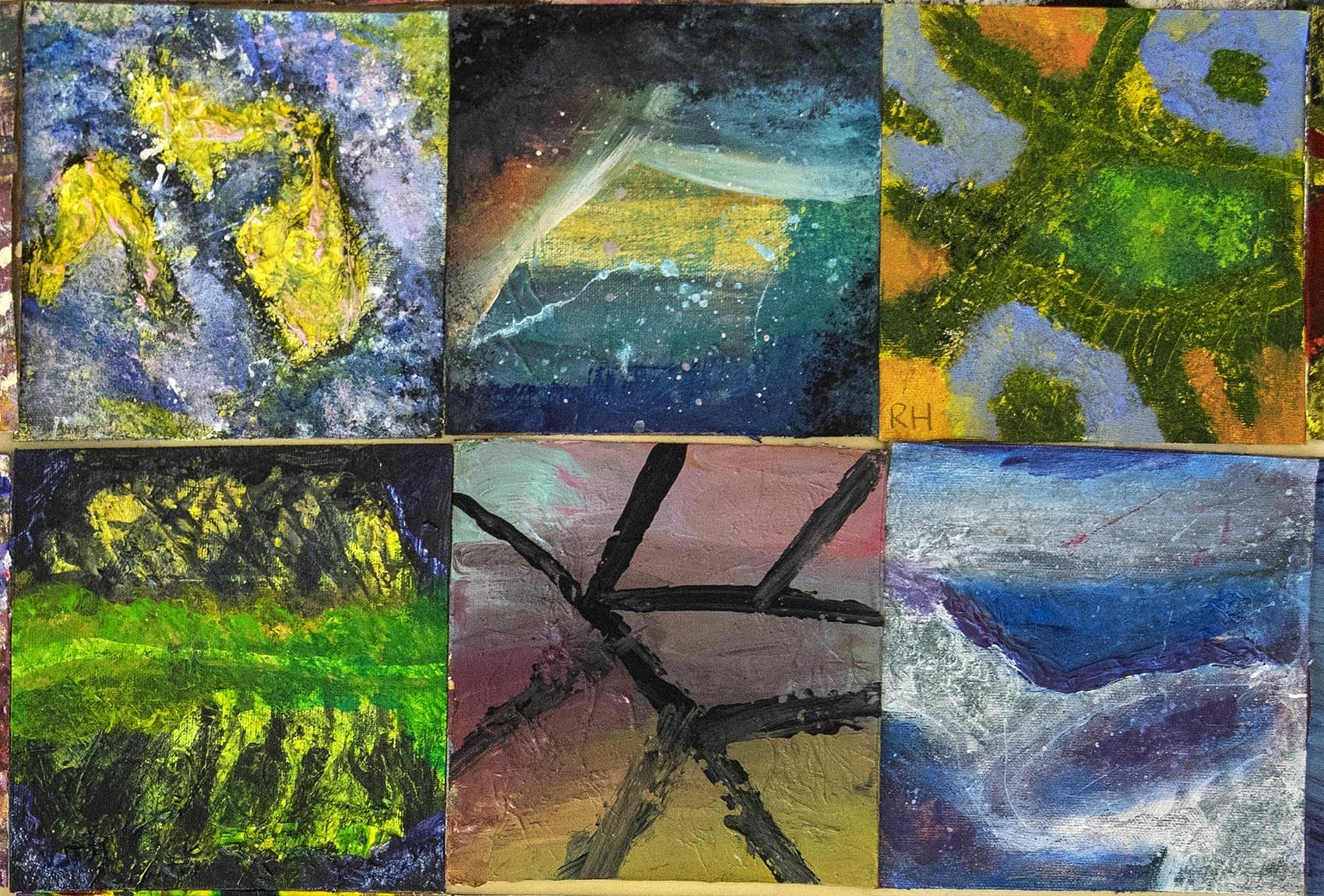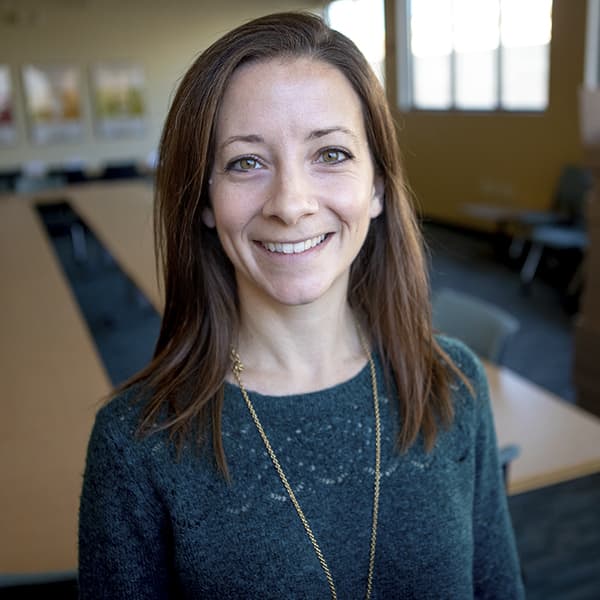Advertisement
Lessons Learned
Beyond Paint: How One Teacher Uses Art To Foster Community
Resume
Amanda Davis was 12 years old when her father passed away.
"It was a confusing time," she said. "I feel like a lot of people don't know how to talk about it or know how to talk to you about it."
Davis's dad died of a heart attack. He also struggled for many years with alcoholism. At first, Davis remembered, she just kept going. She didn't stop to process her feelings or think much about how this major event had affected her life. That approach could only take her so far, though, before she began suffering from a lot of anxiety.
But thanks to a suggestion from her mom, Davis began to draw. It was just quick sketches at first, but that quickly turned into self portraits and even poetry. Initially, it helped her pass the time. But more importantly, Davis remembered it finally gave her a safe space for self reflection.
"I found that really helped me voice things that I wasn't able to otherwise," said Davis.
Typically, her drawings weren't directly about her father dying. They were more abstract with emotions expressed through pencil lines and colors. Drawing and writing became such important outlets for Davis that she eventually decided to become an art teacher.
Her goal was simple: help students learn that art is more than just the technical skills of painting and drawing, but also a way to learn more about themselves and others.

When Davis started teaching at Hull High School she learned quickly that getting to this point wouldn't be easy. But after a few years, she made a breakthrough.
It began with a unit on abstract art.
The kids were asked to create a timeline project that reflected big events in their lives. When they were done, Davis asked them to present their paintings to the class and describe the meaning behind them. She always reassured them that they should only share the details they were comfortable with.
One student stood before the class. The first half of his presentation began as expected, but then he paused and began to reveal a deeply personal story.
"He started to explain that his girlfriend was really struggling with some body image issues and mental health related things," explained Davis. "He felt like he was helpless, not being able to help her."
Davis said he finished his presentation in tears.

What really struck her in that moment was how this student's vulnerability effected the rest of the class. After he stepped down, other students opened up about sensitive emotional topics, too.
"It was a domino effect," she said admiring her students' bravery and vulnerability. "It felt like a real community."
It was a formative moment in her career.
"I think as teachers, that's really what we're here for," Davis said. "How can we help guide these students to be good people and understand people and people's perspectives and ask questions and be curious."
Davis said she's lucky because you can do all of that through art.
This segment aired on November 25, 2019.
